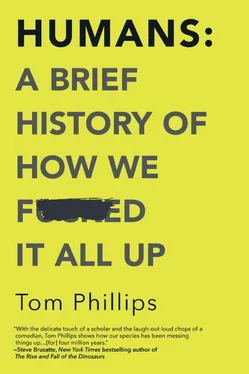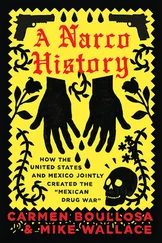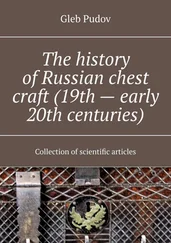Tom Phillips - Humans - A Brief History of How We F*cked It All Up
Здесь есть возможность читать онлайн «Tom Phillips - Humans - A Brief History of How We F*cked It All Up» весь текст электронной книги совершенно бесплатно (целиком полную версию без сокращений). В некоторых случаях можно слушать аудио, скачать через торрент в формате fb2 и присутствует краткое содержание. Город: Toronto, Год выпуска: 2019, ISBN: 2019, Издательство: Hanover Square Press, Жанр: История, Юмористические книги, на английском языке. Описание произведения, (предисловие) а так же отзывы посетителей доступны на портале библиотеки ЛибКат.
- Название:Humans: A Brief History of How We F*cked It All Up
- Автор:
- Издательство:Hanover Square Press
- Жанр:
- Год:2019
- Город:Toronto
- ISBN:978-1-48805-113-5
- Рейтинг книги:4 / 5. Голосов: 1
-
Избранное:Добавить в избранное
- Отзывы:
-
Ваша оценка:
- 80
- 1
- 2
- 3
- 4
- 5
Humans: A Brief History of How We F*cked It All Up: краткое содержание, описание и аннотация
Предлагаем к чтению аннотацию, описание, краткое содержание или предисловие (зависит от того, что написал сам автор книги «Humans: A Brief History of How We F*cked It All Up»). Если вы не нашли необходимую информацию о книге — напишите в комментариях, мы постараемся отыскать её.
Humans: A Brief History of How We F*cked It All Up — читать онлайн бесплатно полную книгу (весь текст) целиком
Ниже представлен текст книги, разбитый по страницам. Система сохранения места последней прочитанной страницы, позволяет с удобством читать онлайн бесплатно книгу «Humans: A Brief History of How We F*cked It All Up», без необходимости каждый раз заново искать на чём Вы остановились. Поставьте закладку, и сможете в любой момент перейти на страницу, на которой закончили чтение.
Интервал:
Закладка:
Unfortunately, in the early 1930s, nobody even really knew what the “ozone layer” was, or just how important that thin band of oxygen molecules in the stratosphere was in shielding the surface of the earth from the sun’s harmful ultraviolet rays. They certainly didn’t know that CFCs, entirely harmless at sea level, would become far more dangerous when they got into the upper atmosphere, where that same ultraviolet radiation would cause them to break down into their constituent elements—and that one of those elements, chlorine, would destroy the ozone, robbing the planet of its protective shield.
In fairness, they also didn’t anticipate that the use of CFCs would end up being far wider than refrigeration. Very quickly people worked out that these new, exciting and extremely safe chemicals had lots of other uses—most notably as a propellant in aerosol sprays. In a darkly amusing bit of historical irony, during and after World War II, CFCs were widely used to spray insecticides, including that other classic example of large-scale chemistry screw-ups, the birth-defect-causing nightmare that was DDT.
After the war, aerosols really took off, in everything from spray paint to deodorants. And they took off in another, more literal way: the vast amounts we started releasing made their way upward into the stratosphere, where they set about dismantling the ozone layer.
The good news here is that this time humanity realized the problem before it could cause death on a massive scale. Woo-hoo! Score one for humans! In the 1970s (just as the first moves to phase out leaded gasoline were beginning), the growing hole in the ozone layer was also discovered, along with the link to CFCs. With that came the warning: if ozone depletion carried on at the current rate, humans would be exposed to more and more damaging UV radiation, and within a matter of decades cancer cases and blindness would soar.
And so from the 1970s to the 1990s, the world set about unwinding Thomas Midgley’s legacy, as both of his major inventions were either banned or phased out in most countries around the world. We’re still stuck with huge amounts of environmental lead—it doesn’t simply break down or vanish, and cleaning it up is a nightmare. But in good news, at least in most places children aren’t breathing it in as much anymore, and the amount of lead in the blood of many kids is now below toxic levels. Hurrah. The ozone layer, meanwhile, is slowly repairing itself now that CFCs have been widely banned: if all goes well, it should be back to pre-Midgley levels by, ooh, 2050-ish. Go, team.
Midgley’s reputation, meanwhile, is set: he was a “one-man environmental disaster,” as New Scientist described him; a man who in the words of historian J. R. McNeill (in his book Something New Under the Sun ) “had more impact on the atmosphere than any other single organism in earth’s history.”
But it’s also true to say that he shaped the modern world, often in unexpected ways. Antiknock fuel led to cars becoming the dominant mode of transport in many parts of the world, and established them not just as tools but as status objects that became a potent symbol of personal identity and individualism. CFCs didn’t just bring your domestic fridge into existence, they powered air-conditioning, too, without which many major world cities simply wouldn’t exist in the same form as they currently do. His two inventions even teamed up: more powerful vehicles with inbuilt AC made regular long-distance driving a realistic, even enjoyable proposition. Large swathes of the American West and much of the Middle East, to take just two examples, would likely be very different places without Thomas Midgley’s creations.
There was a knock-on effect on wider culture, too—for example, in America, movie theaters were among the earliest adopters of air-conditioning, helping to boost the popularity of cinema as a leisure activity during the Great Depression, cementing the cultural impact of the golden age of film and making it perhaps the defining entertainment form of the twentieth century. Basically, what we’re saying is Thomas Midgley invented Los Angeles: a city that runs on cars and AC, and is home to the movie business.
So the next time you sit in a cinema watching a dumb Hollywood film about a cop who doesn’t play by the rules taking on a crime wave, just remember that almost everything about your experience may well come down to the fact that Thomas Midgley Jr. assumed the chemicals he’d invented would be harmless, and would make him three cents on the gallon.
American medic Jesse William Lazear proved beyond doubt that yellow fever was transmitted by mosquitoes—by letting one of the disease-carrying mosquitoes bite him. He died, proving his theory right.
An Austrian French tailor who in 1912 confidently attempted to test his elaborate new parachute suit by jumping from the Eiffel Tower while wearing it (he was supposed to use a dummy). Plummeted to his death.
Peruvian medical student Carrión was determined to investigate Carrion’s disease. Of course, it wasn’t called Carrion’s disease then. It got that name after he injected himself with blood drawn from the warts of a victim, and died.
A doctor who in 1936 wanted to know why cocaine—then used as an anesthetic—had negative side effects. Injected himself with a ton of it, spent the night scrawling notes on the walls of his office in increasingly illegible handwriting, then died.
A genius Swedish chemist who discovered many elements—including oxygen, barium and chlorine—but had a habit of tasting each of his new discoveries. Died in 1786 of exposure to substances including lead, hydrofluoric acid and arsenic.
A lawyer who pioneered an early kind of forensic science. Defending an accused murderer, he proved that the supposed victim could have accidentally shot himself… by accidentally shooting himself. He died, but his client was found not guilty.
10
A Brief History of Not Seeing Things Coming
The modern world is, let’s be honest, a confusing place.
We live at a time when technological and societal changes happen with dizzying speed. Dramatic shifts in the way we live can happen inside the space of a generation, or a decade, sometimes in less than a year. Everything seems to be constantly new: and yet, at the same time, it’s hard to escape the feeling that we’re just replaying the mistakes of our past at an ever-increasing rate. Somehow we consistently fail to see them coming.
As we said all the way back in the first chapter, our ability to accurately predict the future and plan for it has never been great, but the accelerating pace of change over the past few centuries hasn’t exactly helped. When we’re surrounded by shiny and unexpected new things all the time, those heuristics we use to make judgments get thrown out of whack. When we’re bombarded by ever more information, it’s not surprising if it gets too much to process and we fall back on picking out the bits that confirm our biases. How can any of us tell if we’re falling victim to the Dunning–Kruger effect if we’re constantly having to learn how to do new things?
And so we live in an age of endless firsts, most of which we either didn’t see coming, or we ignored the people who did. And unfortunately, not all of those firsts are good. Just ask Mary Ward.
Mary Ward was a pioneer in many ways. She was born into an aristocratic family in the Irish county of Offaly in 1827, but not just any family: from a young age she was surrounded by scientists, both relatives and the visitors they received. She was lucky enough that not only did they nurture her interest in science, they also were able to fund it. As a child, seeing her interest in the natural world, her parents bought her a microscope—the best in the country at the time. It was an inspired present, because it turned out that Mary had a rare skill for drawing the specimens she observed with the microscope. (As a teenager, she also sketched the construction of the Leviathan of Parsonstown—a huge 72-inch reflecting telescope built by her cousin, former Royal Society president William Parsons—which would hold the record for the largest telescope in the world until 1917.)
Читать дальшеИнтервал:
Закладка:
Похожие книги на «Humans: A Brief History of How We F*cked It All Up»
Представляем Вашему вниманию похожие книги на «Humans: A Brief History of How We F*cked It All Up» списком для выбора. Мы отобрали схожую по названию и смыслу литературу в надежде предоставить читателям больше вариантов отыскать новые, интересные, ещё непрочитанные произведения.
Обсуждение, отзывы о книге «Humans: A Brief History of How We F*cked It All Up» и просто собственные мнения читателей. Оставьте ваши комментарии, напишите, что Вы думаете о произведении, его смысле или главных героях. Укажите что конкретно понравилось, а что нет, и почему Вы так считаете.












